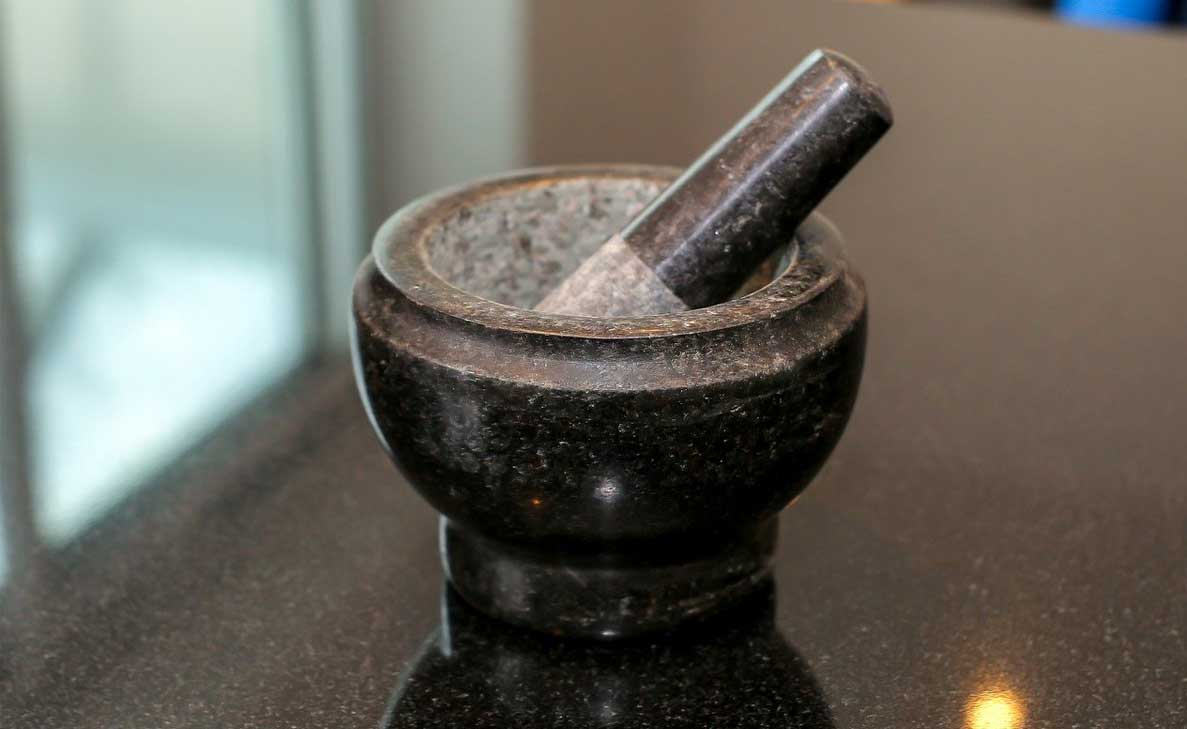

Even now when you go to the kitchens in rural India, you find an ammikallu (as they call in the South and sil batta as known in the North), in a corner as a reminder of the glorious past when the whole kitchen revolved around it. Though on the verge of extinction in urban households, homemakers in the rural kitchen still use them occasionally when the power fails or to appease family members who still relish the taste of chutney made in ammikallu.
Though cumbersome, mortar pestle and rolling stones have a huge fan following among those who value authentic and traditional cooking. The masala ground in an ammikallu and batter made in aattukallu ( rolling stones) taste better because they crush the ingredients slowly and generate no heat in the process, as opposed to chopping them into fine bits. So the spices retain their flavour and release it only when heated during the cooking process. Thus, you can make irresistible and flavourful dishes. Likewise, rolling stone aerates the batter and aids the fermentation process so that you can make soft and fluffy idlis- something that cannot be matched by batter made in mixer grinders.
Though mortar and stones enhanced the flavour of food, grinding batter and spices this way was quite laborious and time-consuming. Blenders were available in the West, but it was available only to the elite who could afford to get them from abroad. Moreover, they weren’t designed for crushing and blending the tough spices typically used in Indian cuisine.
In the late 1960s when Sathya Prakash Mathur’s Braun blender broke down, he had a eureka moment to manufacture mixer grinders for Indian cuisine and thus Sumeet was born. While many did not want to let go of the traditional rolling stones and mortar pestle that were an integral part of their lives, a vast majority was relieved at the time and effort they could save with the splendid appliance. To the extent, Sumeet sold 50,000 mixer grinders a month in their prime years. After Sumeet, many brands entered the foray. The brand that saw the most success is Preethi, which still remains the market leader. Others who won in the market include Bajaj, Maharaja, Butterfly, Prestige and more.
In a way, you can say S.P Mathur and the numerous other kitchen appliance brands played a huge role in empowering women to work outside their homes. It drastically reduced the time and effort they had to apply to run the home. Otherwise, either the husband or the wife would have had to dedicate their life to homemaking and unfortunately, the onus always fell on women.
As the market for mixer grinders grew and competition stiffened, manufacturers started introducing a variety of functionalities to the modest mixer grinders to differentiate themselves from the rest. While initially there were just one or two jars for blending wet and dry ingredients, as time went by, there were 3-4 separate jars for chutney, dry and wet grinding.
The next major innovation was the introduction of a juicer jar with a cylindrical strainer at the centre that was capable of separating the juice from the pulp. Though innovative, most people kept the juicer stowed away in the cabinet once the initial buzz of having a new appliance faded away.
Yet another innovation that truly helped Indian homemakers was the integration of food processors and mixer grinders into a single unit. With attachments and blades for dicing, slicing, grating and kneading, a mixer grinder with a food processor changed the game and gave homemakers a much-needed hand in their kitchen. But even now some of the best mixer grinders have better grinding efficiency due to the higher power and nuanced design and are not necessarily preferred for their bells and whistles.
Alongside mixer grinders, as a replacement to the traditional rolling stone for making idli and dosa batter, brands like Elgi, Butterfly and others introduced wet grinders which used the same principle to crush ingredients using stone but were motorized to minimize the effort. Wet grinders made well-aerated batter unlike what was made in mixer grinders. While mixer grinders chop rice and urad into tiny bits, wet grinders crush them without heating them up. Thus, the batter was more nutritious and well-fermented.
Right when we thought that was the end of it, the health-conscious Millenials started influencing the market and realizing their need for instant smoothie and milkshake, brands started introducing personal blenders. Though Hamilton Beach was the pioneer, slowly the Western market was captured by brands like Vitamix and Nutribullet. In India, the market is rather segmented with brands like Nutribullet, Wonderchef, Agaro and others emerging as some of the notable players. Being handy, portable and easier to use, these personal blenders are a favourite among Millennials, gym-goers and bachelors.
Though the segment as a whole has come a long way since Sumeet. But even now, it remains the noisiest appliance in a home. Though Havells has recently introduced a comparatively silent mixer grinder, it still leaves a lot to be desired. The first to achieve a moderately silent mixer grinder will be the next game changer in the industry.
The weekend is finally here, which means it is time for entertainment! No matter what…
Once upon a time, kids spent their free time chasing each other outside, climbing trees,…
If Vizag is called the city of destiny, then it means the people living in…
After a week-long wait, which felt like an eternity, the IPL is finally ready to…
Everybody loves to visit the zoo, right? It is a common place for a school…
Everyone loves a breath of fresh air, especially when it carries the comforting aroma of…
Leave a Comment